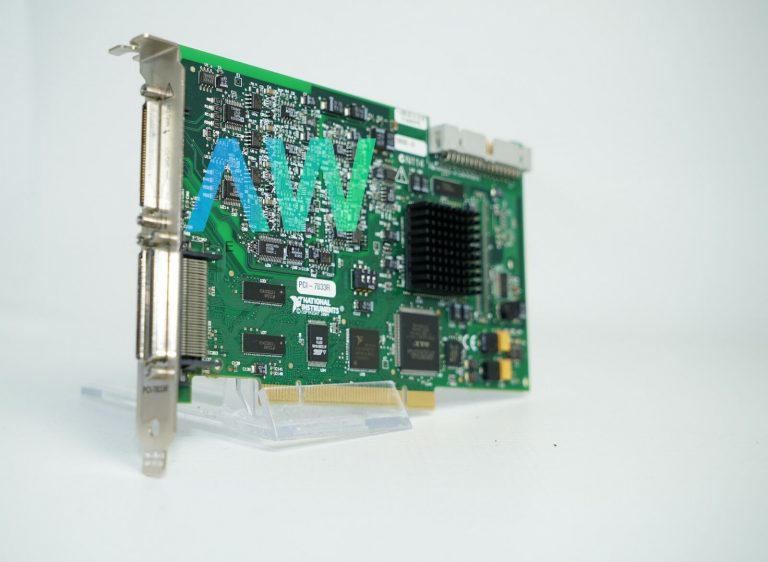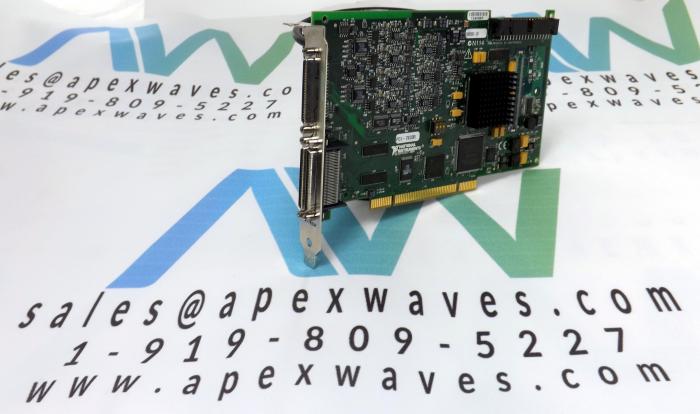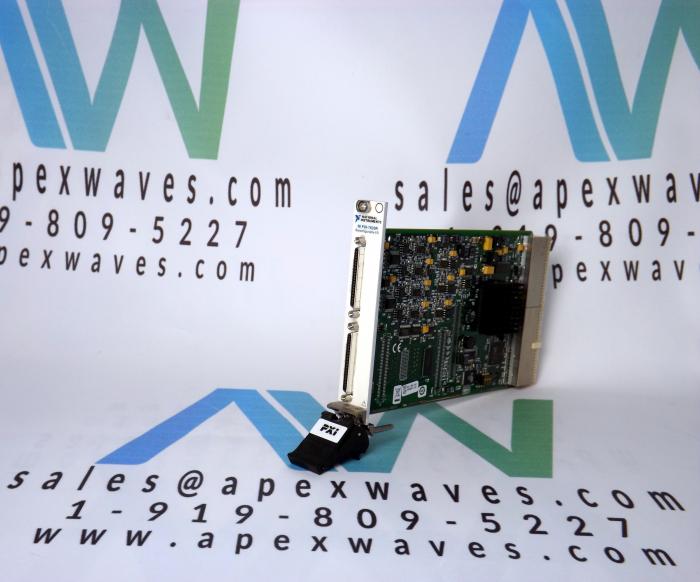Setup and Optimize the National Instruments PXI-5441 Waveform Generator
The National Instruments PXI-5441 is a powerful PXI waveform generator designed to support high-speed waveform downloads up...

The National Instruments R Series consists of Multifunction Reconfigurable I/O (RIO) Devices and Digital RIO Devices which have the capability to control I/O signals and deliver an FPGA that can be programmed by the user for onboard signal processing and versatile system synchronization and timing. With the NI RIO technology, users can define customized measurement hardware circuitry by utilizing reconfigurable FPGA chips and National Instruments LabVIEW tools. The R Series National Instruments Multifunction RIO Devices are available in form factors such as PXI/CompactPCI, PCI, PCI Express, and USB. All of these devices can be used with the NI-RIO driver software, but they are not compatible with NI-DAQmx or NI-DAQmx Base.
These devices have from 6 to 16 analog input channels, 8 to 18 analog output channels, and 32 to 96 bidirectional digital channels. The NI Multifunction RIO Devices have varying types of FPGAs and a maximum clock rate of 40 MHz or 80 MHz. The PXIe devices in the NI R Series support peer to peer streaming. Some of the PXIe devices also have 512 MB of DRAM.

NI R Series Devices stand out from other types of data acquisition devices due to the dedicated analog-to-digital converter for each channel on the device, which is for individual triggering and timing. This also allows for multirate sampling. These features are beyond those of regular data acquisition devices.
Since there are several types of FPGAs to choose from, it can be difficult to determine which National Instruments R Series Multifunction RIO Device is the appropriate choice for your application. However, as a rule, applications that complete simple timing, synchronization, and triggering on the FPGA can be accomplished with a tinier FPGA. On the other hand, if the application involves timing, synchronization, triggering, and further signal processing capabilities, a bigger FPGA is required.

The R Series of National Instruments USB devices can be utilized for several types of applications, including customized digital interfacing, high-speed closed-loop control, sensor simulation, quick prototyping, hardware-in-the-loop test, and more. The USB devices feature Xilinx Kintex-7 FPGAs. These FPGAs have the power of previous high-end FPGAs at nearly half the power. The USB R Series Devices, therefore, are equipped with two times the digital signal processing.
There are several obsolete R Series models, such as the PXI-7811R and PXI-7813R. There are also several mature R Series devices, such as the PXI-7841, PXI-7842, PXI-7851, PXI-7852, PXI-7853, PXI-7854, and more. However, they will still be available for both purchase and repairs by Apex Waves.
Sources:
http://sine.ni.com/nips/cds/view/p/lang/en/nid/212044
A monthly email packed with valuable content—industry news, tutorials, obsolescence updates, and more. No sales pitches, just insights we think you'll find helpful!
The National Instruments PXI-5441 is a powerful PXI waveform generator designed to support high-speed waveform downloads up...
Companies in almost every industry are being transformed by artificial intelligence, and autonomous machines are...
The PXIe Platform from National Instruments offers an incredibly valuable toolset for test and measurement innovation. Its...
It is no secret that simulation and testing is an important part of designing circuits....